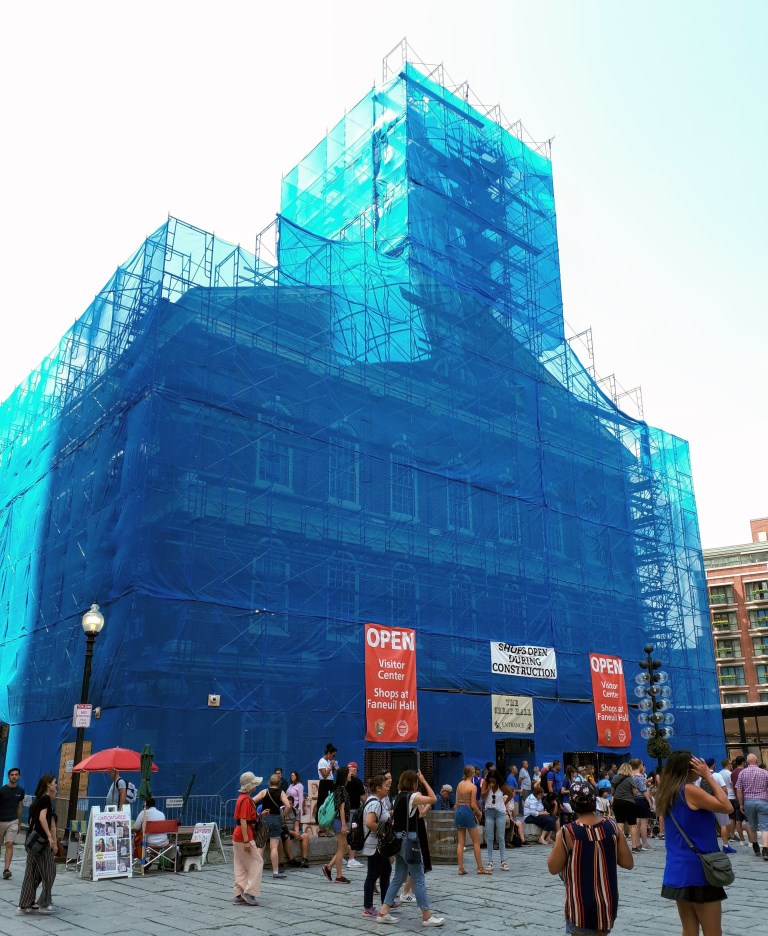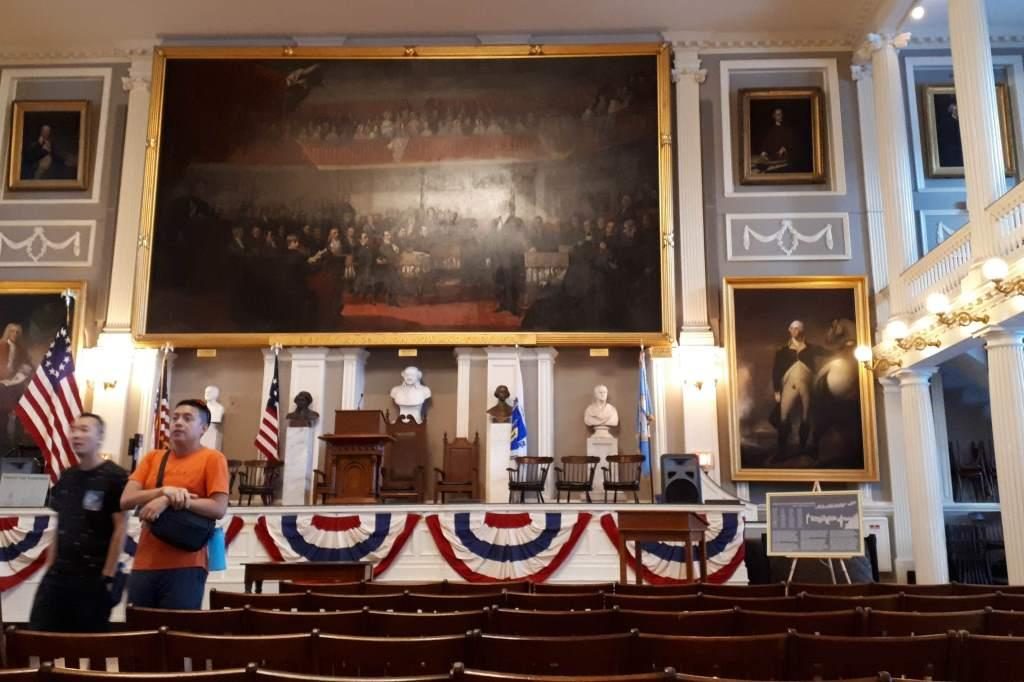I haven’t walked Boston’s Freedom Trail (yet), but I know that one of the important stops on it is Faneuil Hall. Known as The Cradle of Liberty, the building is currently operated by the National Park Service (NPS) and owned by the City of Boston.
Last weekend I was able to pop into the Great Hall, on the second floor, to catch a talk by an NPS Ranger. It sounds like an astonishing amount of important discourse has happened in this space over the years.
From what I understand, the present building was opened in 1763, replacing a previous Faneuil Hall which had been on the site from 1743 until it burned down in 1761. (These dates seem Really Old to someone from Toronto, which only became a city in 1834.)
In this video Prof. Robert J. Allison explains more of the history of the Hall.
It’s important to note that slaves were sold from the marketplace which was (and is) located on the first floor of Faneuil Hall. The Hall’s donor himself, Peter Faneuil, after whom the building is named, was a slave trader.
I gather that there’s controversy about a proposed memorial to slave trade victims which has just been withdrawn by the artist, and the question of whether or not the name of the Hall should be changed. It’s worth seeking out a poster exhibit from Friends of Boston Archaeology in the basement of the building exploring Boston’s role in slavery to learn more.

Faneuil Hall is museum no. 23 in my #100museums challenge (see 100 Museums Challenge).

